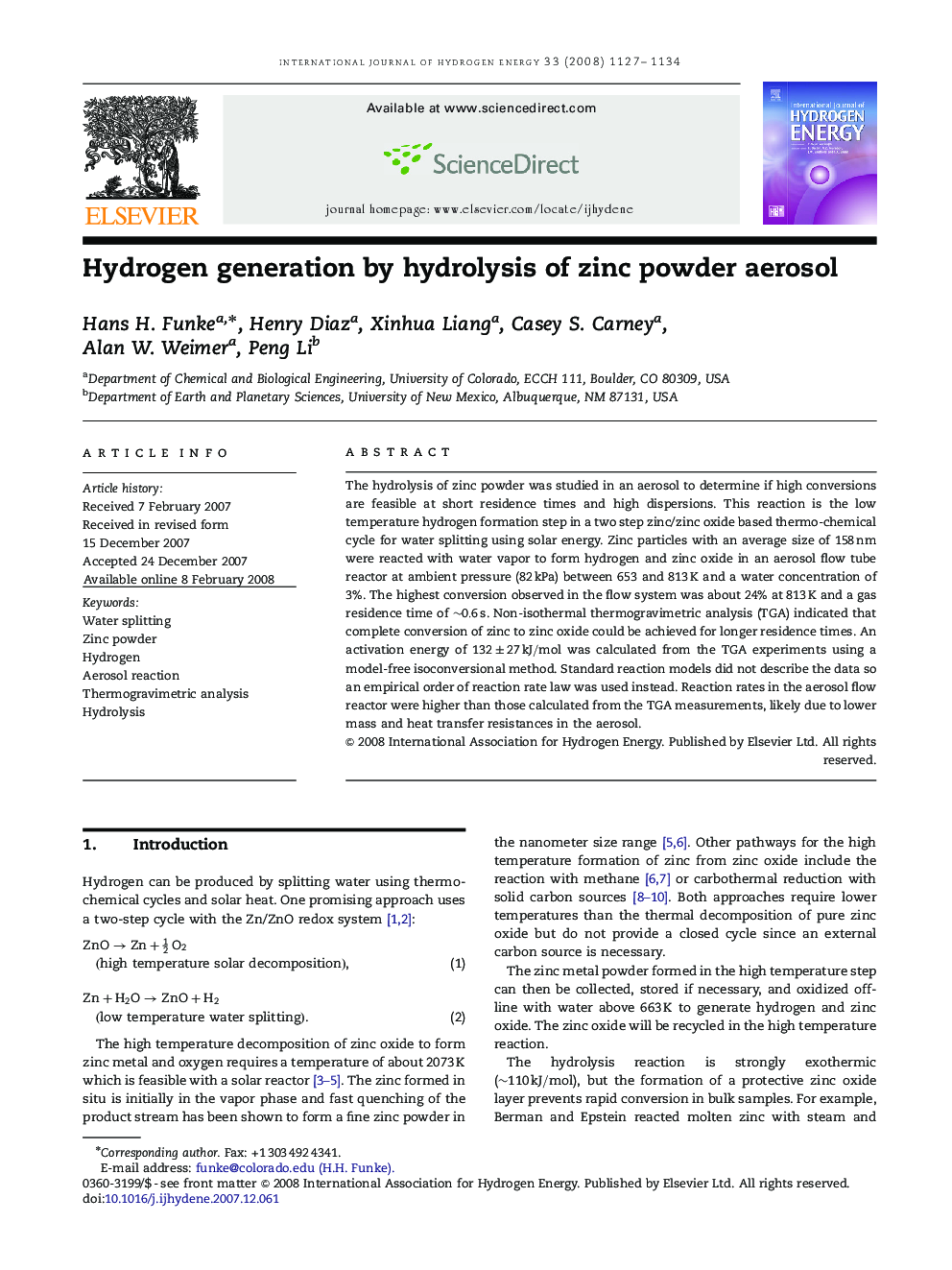| Article ID | Journal | Published Year | Pages | File Type |
|---|---|---|---|---|
| 1274686 | International Journal of Hydrogen Energy | 2008 | 8 Pages |
The hydrolysis of zinc powder was studied in an aerosol to determine if high conversions are feasible at short residence times and high dispersions. This reaction is the low temperature hydrogen formation step in a two step zinc/zinc oxide based thermo-chemical cycle for water splitting using solar energy. Zinc particles with an average size of 158 nm were reacted with water vapor to form hydrogen and zinc oxide in an aerosol flow tube reactor at ambient pressure (82 kPa) between 653 and 813 K and a water concentration of 3%. The highest conversion observed in the flow system was about 24% at 813 K and a gas residence time of ∼0.6s. Non-isothermal thermogravimetric analysis (TGA) indicated that complete conversion of zinc to zinc oxide could be achieved for longer residence times. An activation energy of 132±27kJ/mol was calculated from the TGA experiments using a model-free isoconversional method. Standard reaction models did not describe the data so an empirical order of reaction rate law was used instead. Reaction rates in the aerosol flow reactor were higher than those calculated from the TGA measurements, likely due to lower mass and heat transfer resistances in the aerosol.
